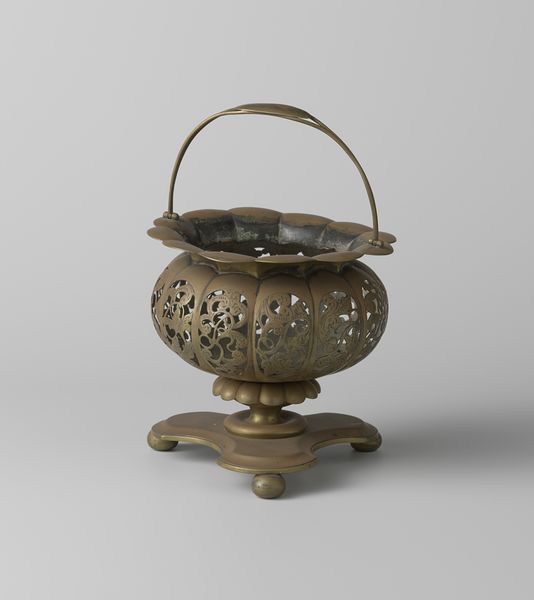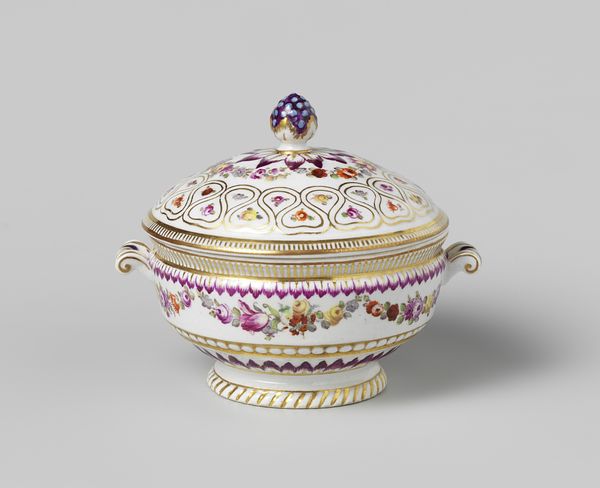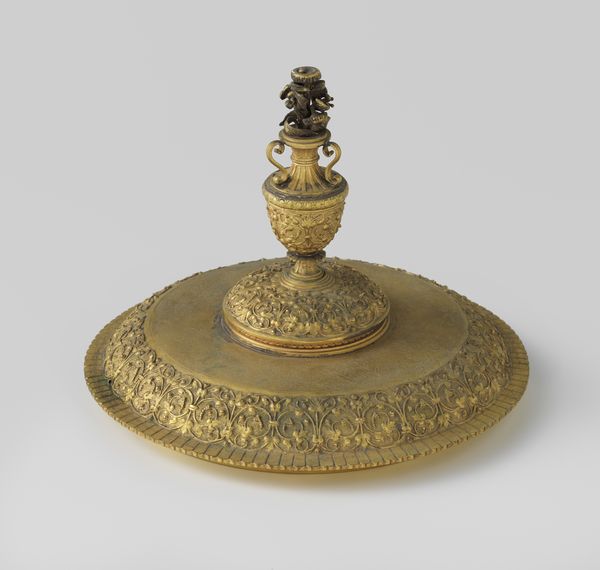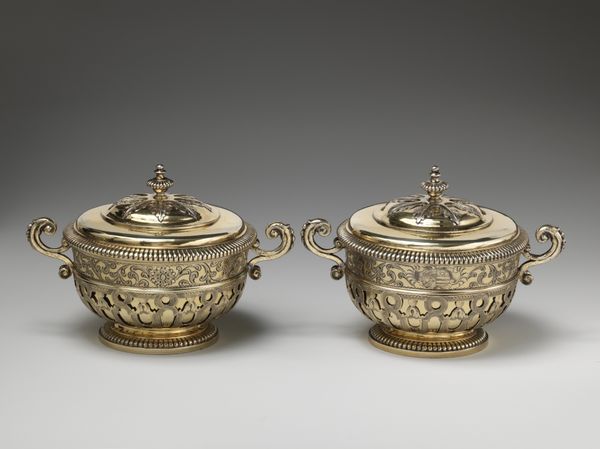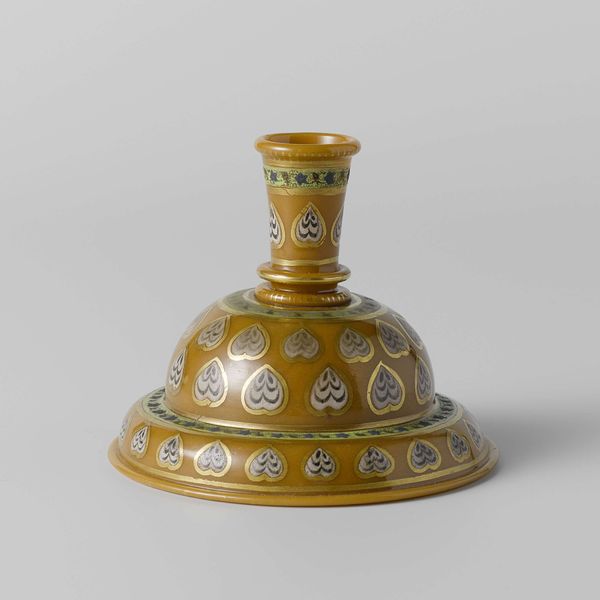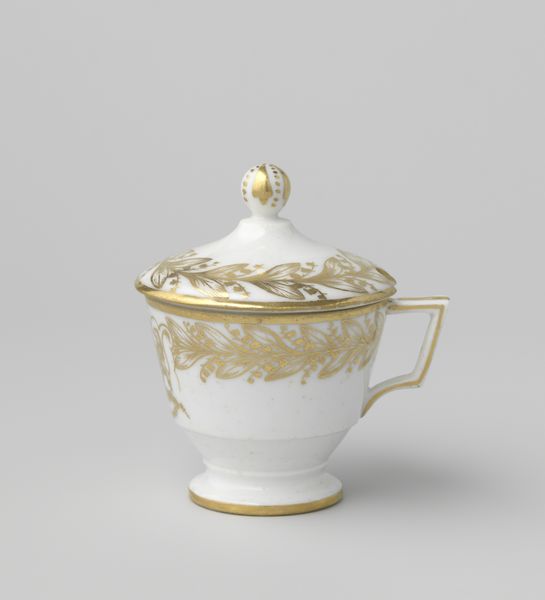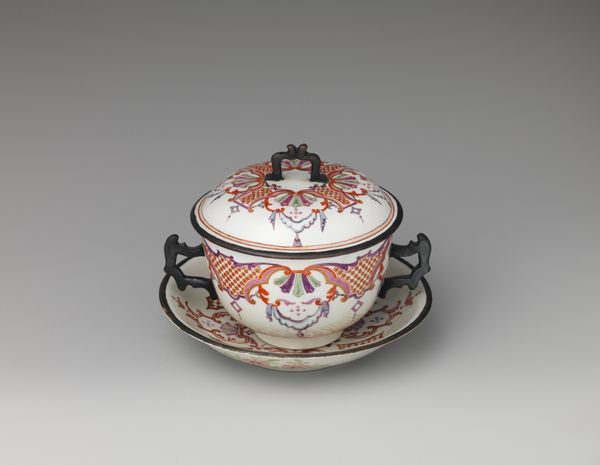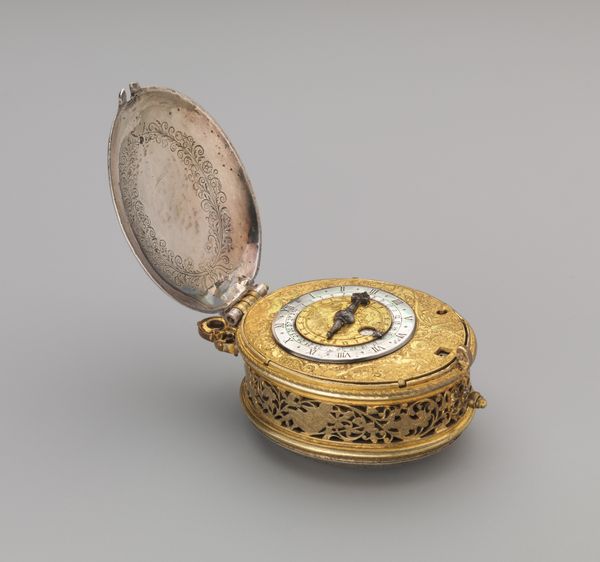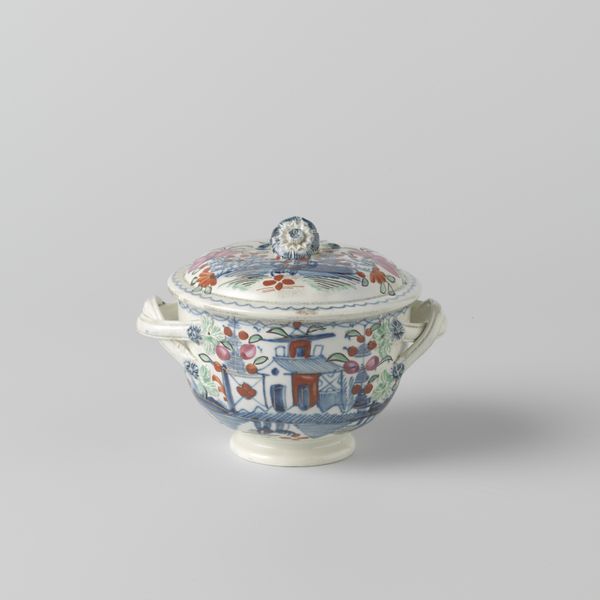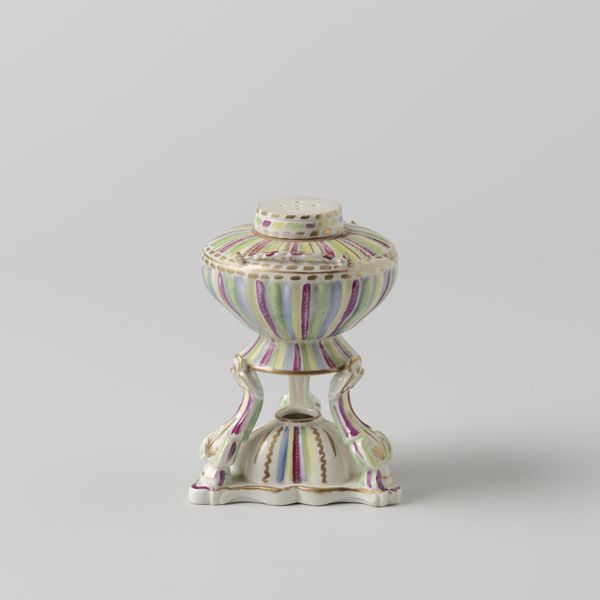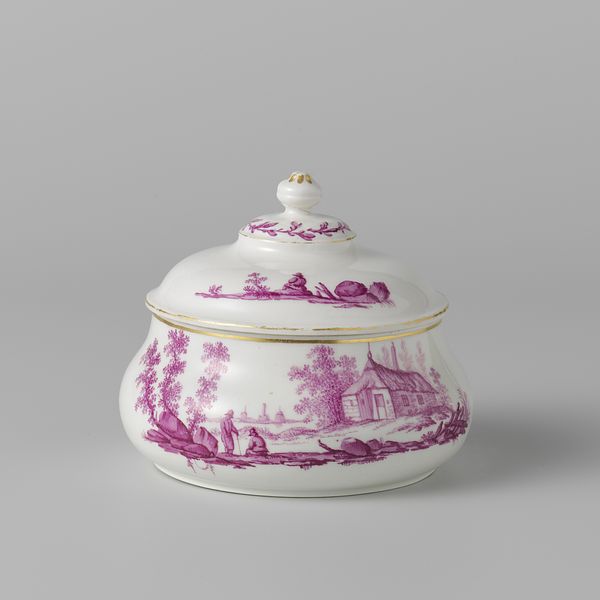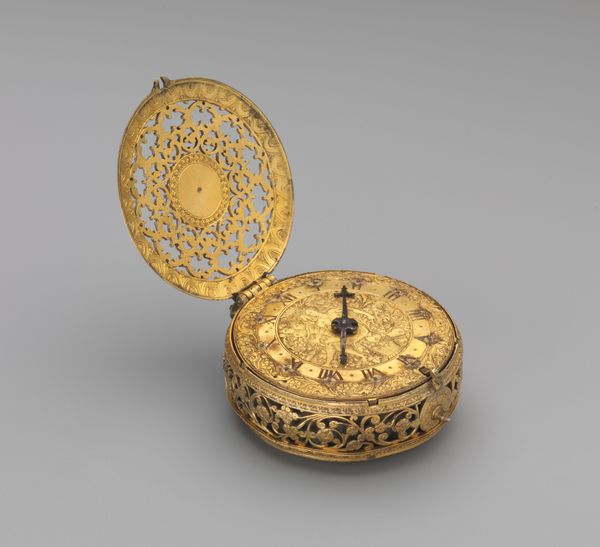
Nautilusschelp met gesneden wijnranken, met bijbehorende houder. 1650 - 1700
0:00
0:00
carving, sculpture, ivory
#
carving
#
baroque
#
sculpture
#
decorative-art
#
ivory
Dimensions: width 6.5 cm, height 3.5 cm, diameter 7.0 cm
Copyright: Rijks Museum: Open Domain
This nautilus shell with carved vines and its accompanying lid was made by Cornelis Bellekin, a Dutch artist who lived in the 17th and 18th centuries. The shell itself would have been carefully selected for its size and quality, before being meticulously engraved. Look closely, and you can see the detailed carving of grape vines across the surface of the shell. The lid, likely made of ivory, shows more carved decorations. The techniques of carving ivory and shell are ancient, requiring immense skill and patience. These materials are inherently luxurious. In the 17th century, exotic shells and ivory objects were collected as curiosities, demonstrating the owner's wealth and worldly knowledge. Consider the labor involved in creating such a delicate object. The carving, the sourcing of the materials – all of these speak to a complex web of trade, artistry, and consumption. By understanding how this nautilus shell was made, we can appreciate its beauty, and the social context from which it emerged.
Comments
No comments
Be the first to comment and join the conversation on the ultimate creative platform.
